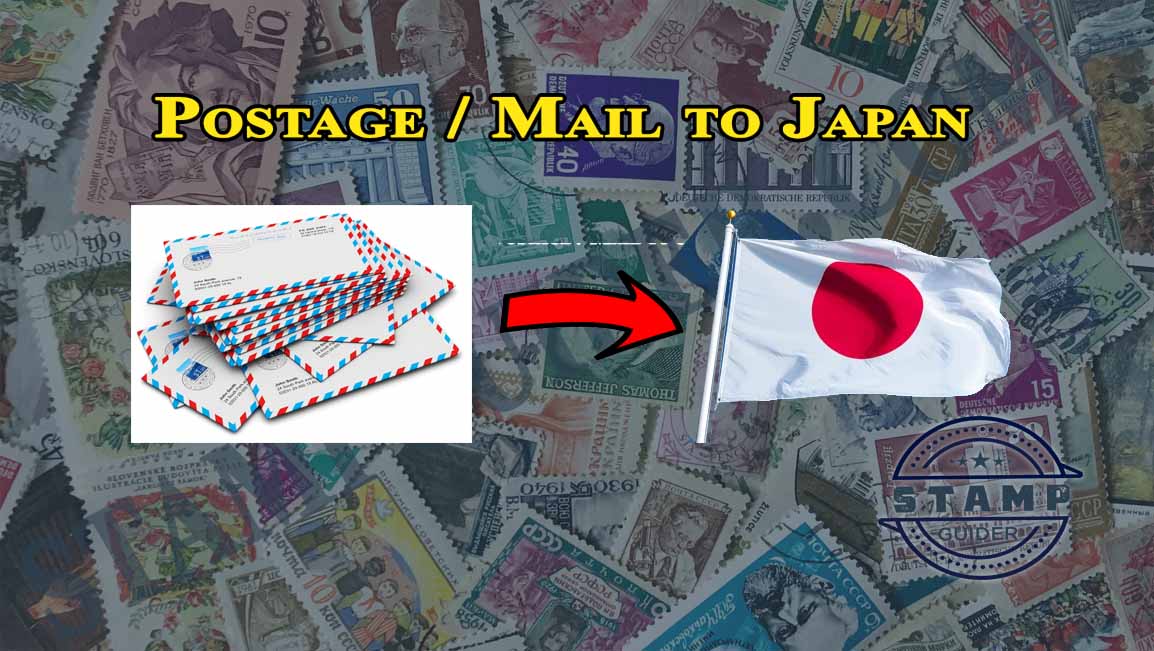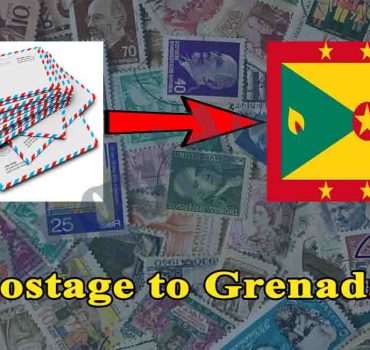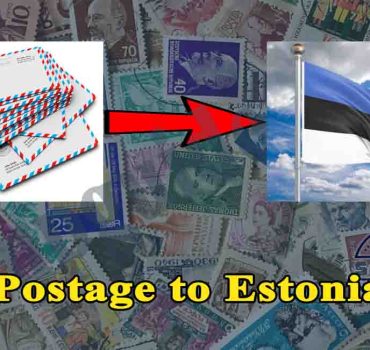Each year, more and more Americans are crossing the Pacific Ocean to or settle in Japan. As a result, more and more people are trying to figure out Japanese addresses to send letters and parcels to their friends and family abroad.
This article describes everything you need to know about how to send postcards, letters, and parcels to Japan efficiently and economically. It discusses the best carriers for shipments to Japan, exclusive shipping and customs requirements, and the shipping costs required for postcards, envelopes, and standard packages.
Table of Contents
Best carriers for Postage or Mail to Japan
United States Post Office (USPS), Federal Express (FedEx), United Parcel Service (UPS), and DHL ship to Japan.
For envelopes and lightweight packaging, the USPS is usually the most affordable carrier. The USPS transports all envelopes and packages to customs offices in Japan, where the mail is then collected by Japan Post (the Japanese courier service), which ultimately delivers it to its final destination.

While the USPS is often the cheapest option, it’s not always the most efficient. If you need your package to arrive quickly or at a specific time, FedEx, DHL, or UPS are the best shipping options. FedEx is the most expensive, but it offers the most final delivery days and has several shipping services that can guarantee delivery within a certain time frame.
Ultimately, since the USPS is generally the most affordable (and popular) option, the postage rates in this article reflect USPS prices, unless otherwise noted.
Post to send postcards to Japan
Postcards can be sent via USPS using international postage rates. To send a postcard to Japan, you will need $ 1.20 for postage, which can be covered by one First Class Forever World Stamp ($ 1.20) or three First Class Forever Stamps ( US $ 1.65).
The USPS defines postcards as rectangular cards with dimensions between 3.5 × 5.0×0.007 inches and 4.25 × 6.0×0.016 inches. Cards that are outside of these dimensions (or that are not rectangular) require additional postage.
Post to send standard envelopes to Japan
Envelopes can be shipped to Japan using USPS international postage rates. To send an envelope weighing less than 30 grams, you will need $ 1.20 for postage. You can use one Global First Class Forever badge ($ 1.20) or three First Class Forever badges ($ 1.65).
If your envelope weighs more than an ounce, you will need an additional $ 1.04 on postage for each additional ounce.
The USPS defines standard envelopes as envelopes with dimensions between 3.5 × 5.0×0.25 inches and 6.125 × 11.5 × 0.25 inches. If your envelope is rigid or not rectangular, it will be considered non-machinable, which means it will have to be separated by hand. Non-machinable envelopes require an additional $ 0.21 for postage.
Post to send large envelopes to Japan
Large envelopes can be shipped to Japan using USPS international postage rates. The USPS considers large envelopes to have dimensions between 6.125 × 11.5 × 0.25 inches and 12x15x 0.75 inches.
The shipping costs required for sending large envelopes depend on the weight of your envelope:
| Weight | Postage Required | Stamps Required |
|---|---|---|
| 1.0 ounce | $2.40 | 2 Global Forever Stamps ($2.40) or 5 First Class Forever Stamps ($2.75) |
| 2.0 ounces | $3.39 | 3 Global Forever Stamp ($3.60) or 7 First Class Forever Stamps ($3.85) |
| 3.0 ounces | $4.37 | 4 Global Forever Stamp ($4.80) or 8 First Class Forever Stamps ($4.40) |
| 4.0 ounces | $5.36 | 5 Global Forever Stamp ($6.00) or 10 First Class Forever Stamps ($5.50) |
| 5.0 ounces | $6.34 | 6 Global Forever Stamp ($7.20) or 12 First Class Forever Stamps ($6.60) |
| 6.0 ounces | $7.32 | 7 Global Forever Stamp ($8.40) or 14 First Class Forever Stamps ($7.70) |
| 7.0 ounces | $8.31 | 7 Global Forever Stamp ($8.40) or 16 First Class Forever Stamps ($8.80) |
| 8.0 ounces | $9.29 | 8 Global Forever Stamp ($9.60) or 17 First Class Forever Stamps ($9.35) |
| 9.0 ounces | $11.26 | 10 Global Forever Stamp ($12.00) or 20 First Class Forever Stamps ($11.55) |
| 10.0 ounces | $11.26 | 10 Global Forever Stamp ($12.00) or 20 First Class Forever Stamps ($11.55) |
Visit Where to Buy Stamps to find out where to buy stamps near you.
Postage to Send Packages to Japan
The postage required to send packages to Japan is based on the size and weight of the package. You can calculate the cost of posting your order using the USPS Franchise Price Calculator.
To use the USPS Postage Price Calculator, follow these steps:
- Follow the link to the USPS Posting Price Calculator.
- In the “Which country is the target country” drop-down menu, select “Japan”.
- Enter the date and time when you plan to ship your order.
- Select the type of package you want to send.
- A new page will appear with the price for various shipping options in your area.
You can choose the shipping method of your choice based on the desired delivery date. After determining the shipping method you want to use, you can print a label using USPS Click-N-Ship.
If you want to avoid the hassle of calculating the size and weight of your package, you can also ship items using the USPS Flat Rate boxes. Flat fee boxes come in a variety of sizes and can be shipped for a standard fee, regardless of the weight of the content.
Sending a flat rate box internationally is similar to sending a flat rate box within the United States. However, unlike domestic shipping, international flat rate boxes restrict you to a maximum weight of 20 pounds.
For more information about the flat rate shipping options offered by the USPS, visit USPS Priority Mail.
Delivery times for Japan
The average delivery time for postcards and envelopes shipped with USPS First Class Mail International (the standard shipping option used) is 7-21 days. If you send postcards or envelopes using Priority Mail International, the delivery time will be reduced to 6-10 days. Priority Mail Express International is the most expensive option for postcards and letters, but guarantees delivery in 3-5 days.
Package delivery times depend on the carrier and shipping method you choose. The delivery of packages may also be delayed by customs. Typically, packages shipped with USPS, FedEx, DHL, and UPS take 2-7 days to reach their final destination.
Addressing correspondence with Japan
Addressing your package is often the hardest part of sending something to Japan. The language and address setting are very different from what we are used to in the United States.
In Japan, most of the roads do not have a name. Also, instead of using the road number and name to identify the building (like we do in the US), Japan uses districts, divisions, and blocks to restrict the location. This situation is further complicated by the fact that most areas number buildings based on date of construction and not geographic location.
Although Japanese is the official language of Japan, you can write the address on your order in Japanese or English. The language you choose to write in will determine how the address will be configured.
For example, here is an address written in English and Japanese respectively:
〒950-0973
新潟県新潟市中央区上近江4−2−20-203
山本様
日本
Mr. Yamamoto
Dia #203
4 Chome-2-20 Kamiomi, Chuo Ward
Niigata 950-0973
Japan
As you can see, the order of the address in each language is quite different. In the following, we will show you the correct way to write an address in English and Japanese.
Writing an address in Japanese:
If you are writing an address in Japanese, it will follow this format:
〒950-0973
新潟県新潟市中央区上近江4−2−20-203
山本様
日本
Line 1: Postcode
The postal code includes the postal symbol, along with a seven-digit postal code.
Line 2: Address
The address must include the name of the prefecture, followed by the city, town, neighborhood, etc., followed by the block. The three numbers at the end of the address are separated by dashes and designate the subarea, the block and the building number. If the address includes an apartment number, the number will be added with a final dash.
For example, the address above is translated as Niigata Prefecture, Niigata City, Chuo District, Kamiomi subarea 4, block 2, house number 20 and apartment 203.
Line 3: Recipient’s Name
The recipient’s name must be written “surname, first name, title”. For example, the name above is translated as Yamamoto-sama. “Sama” is the polite form of “san” and correlates with “Mr.” English or “Mrs.”
Line 4: Country
This line represents the country where the final destination of your package is located (in this case, you will want to write “日本” or “Japan”).
Writing an address in English:
If you are writing an address in English, it will follow this format:
Mr. Yamamoto
Day # 203
4 Chome-2-20 Kamiomi, Ala Chuo
Niigata 950-0973
Japan
Line 1: Recipient’s Name
The recipient’s name can be written in English format (for example, Mr. Yamamoto) or in Japanese format (for example, 山 本 様).
Line 2: Apartment number (optional)
If the address includes the apartment number, you must write the name of the building, followed by the apartment number.
Line 3: Address
The address must begin with three numbers, separated by dashes, that designate the subarea, block and building number of the address. After the numbers, you must include the subarea of the address, followed by the area, city or town.
The words “shi” and “ku” help to designate the city and the neighborhood, respectively, and can be used in the English address. However, its inclusion is not necessary. For example, you can say “Chuo-ku” instead of “Chuo Ward”.
Line 4: Postcode
This line must include the prefecture, followed by the seven-digit postal code. The word “for” can be used to help designate the prefecture, but its inclusion is not mandatory.
Line 5: Country
This line represents the country where the final destination of your package is located (in this case, you will want to write “日本” or “Japan”).
Customs forms for shipments to Japan
Packages sent to Japan require customs forms.
If you ship with USPS, you can print customs forms on custom USPS forms. Envelopes and small packages require a Customs Declaration Form 2976, which appears as a separate item on the shipping label. If you are shipping medium to large cartons, or items valued over $ 400, your package will require Customs Declaration Form 2976A and CP 72 Shipping Note, which includes a full custom report to include with your parcel.
If you are shipping with UPS, you can complete your customs forms using UPS Electronic Data Interchange (EDI). If you ship with FedEx, you can complete your customs forms using FedEx Electronic Trade Documents (ETDs). If you are shipping with DHL, you can create your customs form using the Customs Documentation Center.
If you are concerned about your customs forms or don’t know how to fill them out, employees at USPS, DHL, FedEx, and UPS will be happy to help you fill out the forms and prepare your package for shipping.
Items prohibited from importing into Japan
Each country has its own set of rules on what items are prohibited from being imported or exported. Being able to ship an item from the United States does not guarantee that the item will be able to pass customs and enter your destination country.
Japan has a particularly robust list of prohibited or restricted imported items. Therefore, it is important to make sure that the items you send are not included in the lists of prohibited or restricted items in Japan.
For a complete list of Japanese import bans and restrictions, see FedEx Cross Border Japan Prohibited and Restricted Items.
For more information on shipping to the United States and internationally, we have detailed shipping and shipping information on stampguider.com


